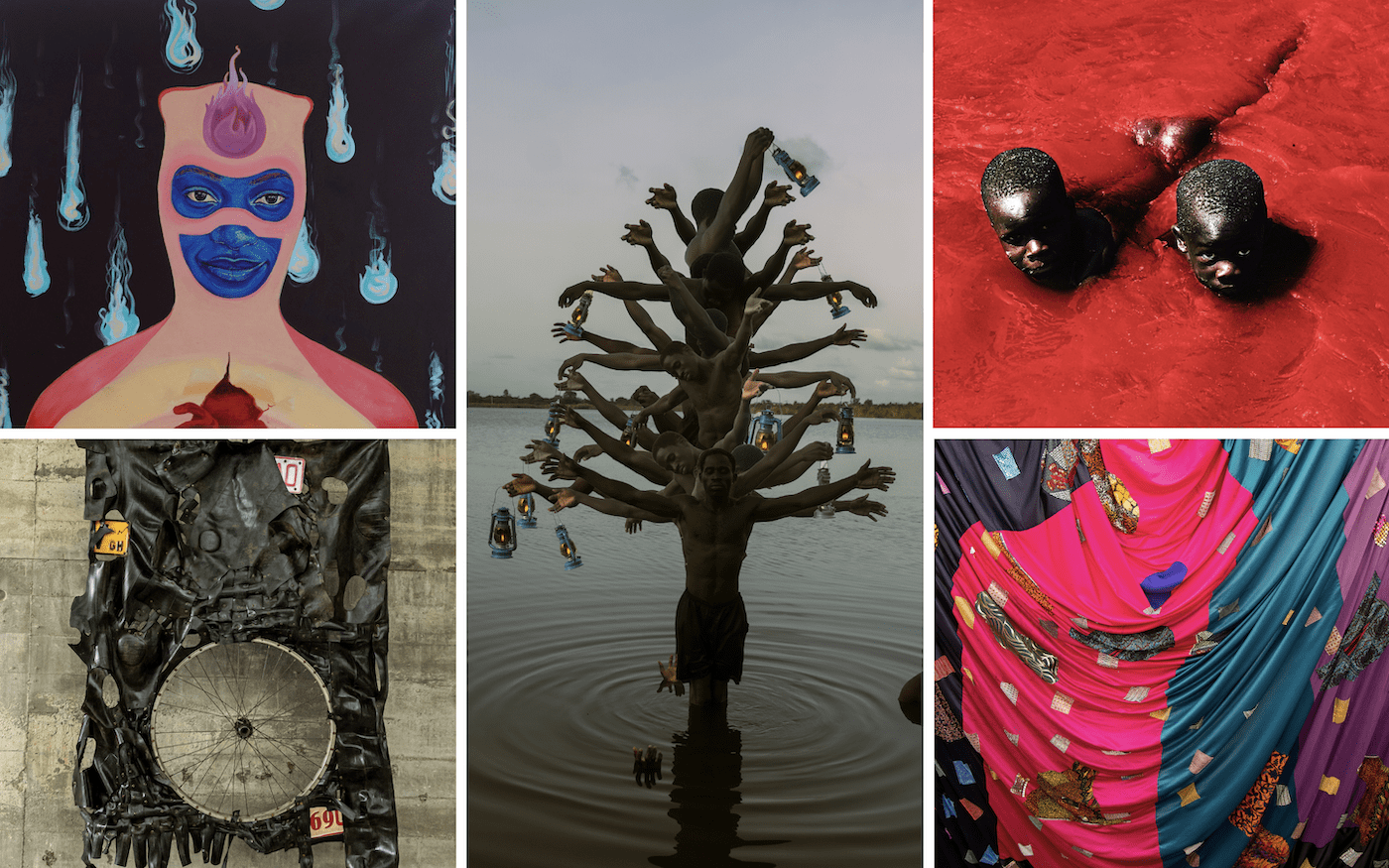A Roundtable with Emerging Artists Working with NFTs
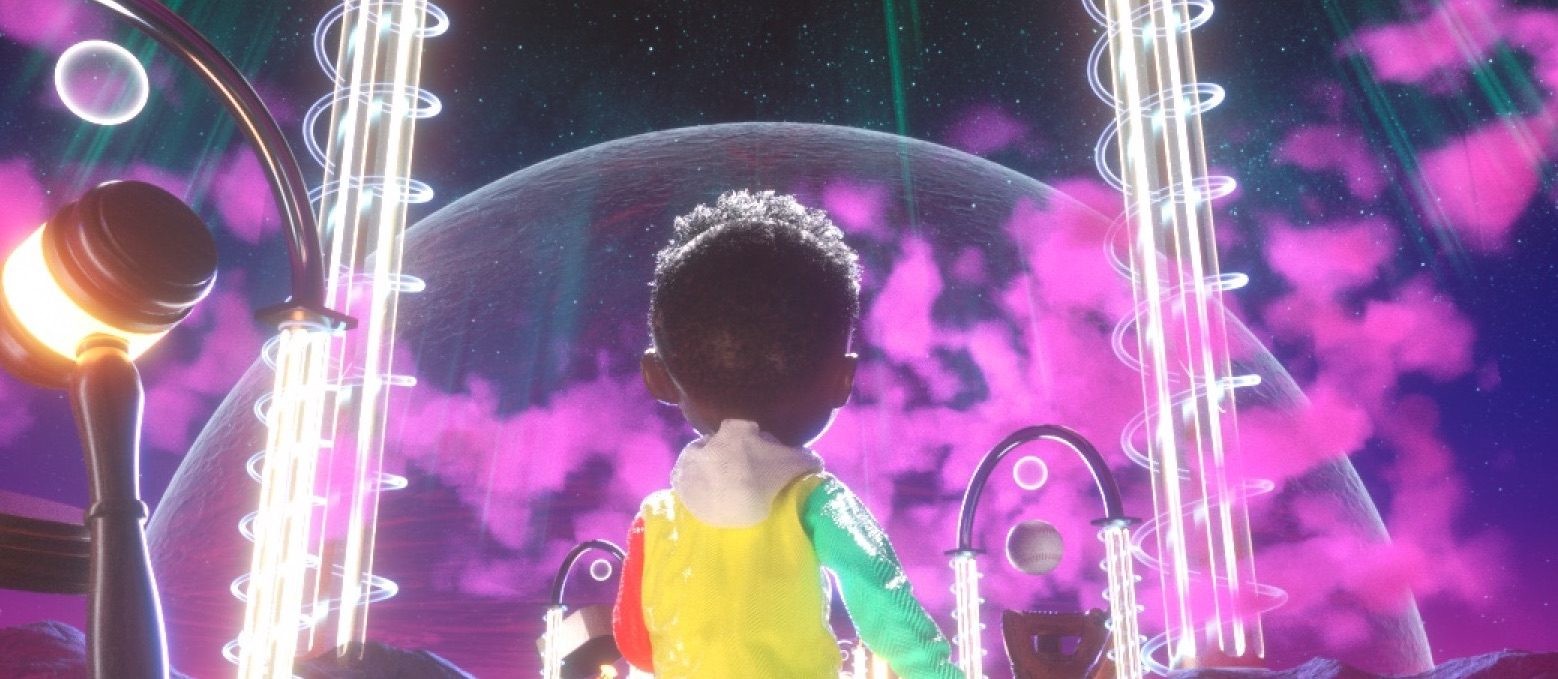
09 June 2021
Magazine C& Magazine
Words Tash Moore
12 min read
Four artists speak to Tash Moore about the opportunities of digital art.
In a follow up to our introduction to NFTs, C&’s Tash Moore speaks with four Black artists in different spaces and career stages to get a wider view of the cryptoart landscape. Lana Denina, Niall Ashley, Andre Oshea, and BogosiSekhukhuni are moving the needle in the market for contemporary Black art. For questions relating to criticisms of NFTs’ ecological impact, the answers, which combine input from our collaborators, have been rendered anonymous.
Lana Denina Cohen-Solal is a Montreal-based painter of Beninese and French origin. Her art combines digital and physical expression, and explores human relationships, morphological diversity, and body movements.Niall Ashley creates colorful large-scale paintings which examine bureaucracy, class, and racial identity, sampling from their Black experience and childhood in Bristol.Andre Oshea is a leading 3D animator and creator based in Georgia in the US. He has worked with numerous brands including Vogue and Netflix.Bogosi Sekhukhuni, based in Johannesburg, is a founding member of NTU, an artist group dealing with tech health, and has worked with the CUSS Group.
C&: How did you learn about cryptoart, or NFTs?
Lana Denina: I learned about NFTs from my boyfriend who is a crypto trader. I immediately understood its potential, and as a digital artist I found it life-changing. Sure, it was quite hard to get started since there are LOTS of things to learn, but that process was completely worth it.
Niall Ashley: I heard the term “cryptoart” on a Clubhouse chat for Black artists in late November 2020, back when Clubhouse was in beta stage and rooms were pretty free-for-all. I binge-watched some YouTube videos explaining the blockchain, what an NFT is, and what the best platform is. This involved a long-winded process of listening to tech-bros and trying to explain what I had learnt to my friends. The general understanding I got was that anything that was made using traditional methods did not belong on NFT platforms.
I kept hearing the term “digital art” in relation to crisp 3D renders and ProCreate works, which sort of alienated me and made me think I should sit this one out. But after some back and forths with a close friend of mine, I finally dropped an NFT and took the leap of faith into the community. It took me until February to realize the possibilities of the NFT as a medium for performance pieces, and that photographing or scanning a work created physically makes it digital. Anything that can exist as a file can present as digital art.
Andre Oshea: My online community brought them to my attention. Pioneering artists in that space saw that there was a natural synergy between my style of work and the interests of collectors.
https://www.youtube.com/watch?v=OZiK3zwjV-U
C&: There are concerns about the ecological sustainability of the Ethereum blockchain to manage the heightened traffic related to NFTs. Do you see this as a reasonable obstacle?
Anonymous: It's interesting how successful media coverage was and is of the environmental impact of cryptocurrencies in general, and I think that because of this investors are already looking to support blockchains that center sustainability.
C&: The environmental impact of blockchain is beginning to be better documented. We don't have to wait a generation to see the toll it takes on our carbon-footprint goals. Do you see us responding well to this information, or just continuing business as usual?
Anonymous: I think we will start to see standards or regulation introduced around acceptable margins of climate impact. That being said, I feel like there’s a lethargy behind climate legislation in general – governing bodies that are too slow to respond to freak weather fatalities, for example – that will further endanger disenfranchised people around the world. That is to say, it's going to be business as usual until the livelihood of really powerful people start to suffer.
C&: What marketplaces have you found easiest to build community or following within?
LD: Foundation is a truly amazing platform curated by the artists. It is very user-friendly with an amazing community of artists and collectors. I’m also onKnown Origin, which is a curated platform as well. I love KO since they really take the time [to select] various great artists – they are very supportive of their artists, which is always a great thing.Rarible is also super nice – an open platform with a huge community with the most diverse art ever.
NA: Currently, Zora and Foundation are the only marketplaces I am on, but, in terms of building community, platforms like TikTok and Instagram are where my work is most seen. Like most artists, I have struggled to stay on good terms with the algorithms that dictate who gets to see the work. Since I started creating my performative painting works that extend objects and forms from a painting using camera tricks, my art has been pushing further into new communities. I am super grateful, and hope the algorithm gods will stay on my side. Twitter is also helpful for connecting with collectors, but I wouldn’t say I have got the complete hang of it yet – I am definitely more of an image-maker than a deep tweeter or a digital marketing guru.
AO: Honestly, I think each platform has their own unique audience. It’s pretty cool because it allows you to create more free-flowing work. Knowing the type of collector that frequents each platform is great – I think it prevents artists from being forced to create the same style of piece over and over.
C&: How has developing a digital market for your work changed how you view traditional currency and trading?
LD: It made me develop a very strong interest [in] cryptocurrency and the whole digital market. I feel like it makes so much more sense than traditional currency and trading. It has clearly been made for [the] internet and for our century. Since we mainly useETH [ethereum] as a cryptocurrency for NFTs, it is the blockchain that I know the best, but even with the little knowledge I have of blockchains, I can already see how incredible they are.
NA: Visualizing your artwork as a growing asset is much easier than the traditional method of accumulating work physically until the right collector knocks on your door. There is an all-compassing transparency that operates around the sales of the NFT digital market; everyone can see your market value in real time. Previously, the artist has had to [retain] an air of mysteriousness about the price points of their work, avoiding coming off tacky or low-end, which is quite ridiculous when most art cannot coexist without money to fund artworks and artists.
As soon as you dip your toe into NFTs, the volatile altcoins and cryptocurrencies seem less crazy, and that also has an effect on traditional currency. Traditional institutions can create barriers to entry and halt trading outright for their own agenda, whereas with cryptocurrencies, a bunch of kids can get behind a meme coin and boost its value with the power of community through places like Discord and Reddit.
AO: What I tell people is, learning the ETH economy is like learning another language. Once you start to understand the basics, it opens up your mind to how other languages are used – it even highlights the flaws of your initial language.
[cand-gallery image-no=1]
C&: Has this growth changed how you view sales in the art world? Would you consider more traditional strategies?
LD: I’m a digital artist but also a painter, so I know very well how these two worlds are different but still similar in certain aspects. Before starting NFTs, I was designing merch and furniture in order to be able to sell my digital art. I always felt sad that we had no way to sell our digital art like traditional art, but with cryptoart it is now possible. NFTs are digitalizing the traditional fine art world, which is beautiful to see. However, I think physical art is important too and I will definitely still be a part of it. NFTs are really just creating a bridge between digital and fine art, in my opinion.
NA: Art will still be available at physical fairs, auction houses, and galleries. However, the addition of NFTs allows for a new set of artists who are not lucky enough to enroll on an MA program at a prestigious university. They can find collectors directly, trimming out the middlemen and the financial barriers of education and location. For me digital markets are a lot more feasible right now, but in future I want to have works available in traditional settings also. The gallery and the auction house do have symbolic value, and for marginalized groups, this can help further representation on a global scale.
For those artists outside the art-world cohort, digital markets expose how speculative the market really is. All it takes is one collector to purchase a work and the artist earns the temporary aura of a complex deep-thinking genius. Hopefully, the growth of digital markets will start to break down these stereotypes and the correlation of an artist’s sales with their cultural impact.
AO: Absolutely. Before getting into this space, an overwhelming percentage of my sales were commission-based projects. Generating sales without having to provide a service has created a safe space for my art.
C&: There are concerns about blockchain and NFTs specifically excluding the majority of Black, Indigenous, and Latinx communities due to historical exclusion from financial infrastructures. Do you see any routes for cashless options benefitting BAME/BILPOC consumers, or for closing the gap between the traditional art economies and creators? Especially as NFTs are currently leaping over some of the gatekeeping of managers, auctions, and galleries that has historically excluded many non-white creators.
Bogosi Sekhukhuni: From my limited awareness, it seems there is rich potential in the infrastructure – like it’s the recipe for some greater phenomenon the world hasn't unpacked yet. I see potential in the ways we can critically disentangle or explode value, so the popular news of record-breaking sales feels gross and sad to me [right now]. I personally feel that closing the gap isn't a worthwhile project. The question of reform in the art world is an economy in and of itself – it is self-sustaining. For this reason I like to think about what professional life looks outside the larger art world, and I aim to encourage some inter-industry, interdisciplinary ways of producing.
C&: What artists and institutions do you dream of collaborating with, or who inspires your work?
BS: I would love to work with theUnited Nations’ Office for Outer Space Affairs, the Japanese Aerospace Exploration Agency, Charles Ross, and Yeezy.
LD: LOTS! I would say that a collaboration with Rihanna, Virgil Abloh, or A$AP Rocky would be a total dream. They all are amazing artists with incredible sense of design and the arts.
NA:Sin Wai Kin has been a big inspiration for me recently; their work has opened up my mind on how gender can be represented and extending images into autonomous characters. Sin Wai Kin's lore crosses over to various mediums yet still retains its symbolism, which I aspire towards with the iconography forming in my work. My friend put me onto a Sean Scully documentary the other day – seeing his thought process during making, and his blasé, unphased attitude to critics resonates with me. Sean had a tough upbringing and has allowed himself to transcend the boxes which institutions try to put you in if you don’t come from the upper-class cloth.
I am not the biggest fan of collaborations, personally; I find I work much better by myself. I think my previous endeavors in working on videos for clients and having some entity take credit for my labor created this deep-set value in me. I work alone and alone only.
AO: Easy.Daniel Arsham. He’s my favorite artist – oh, and Mark Rothko! A very close second. I love trying new mediums, and I love to embrace the future. Since making the switch to digital art, my expression has become digital as well.
C&: Working as non-binary artists, Bogosi and Niall, do you find the digital space more comfortable as a mode of expression, or a wider niche being carved for your identities in traditional settings?
BS: The digital space can be great, there's lots of it, and like all spaces it has to [be] built to your liking. I don't always have the tools to build the way I want, and that sometimes makes me acutely vulnerable, so in a lot of ways digital space is also dangerous. But dangerous in the way that driving a car is dangerous. Digital spaces are powerful tools for self-actualization, but when this space is filtered through capitalism, an inherent structural violence towards disenfranchised people reveals itself.
Additionally, because all digital activity is commodified, Black and Indigenous people are especially at risk of erasure and suppression. For example, the automation of individuality can make it so marginalized, identities are replicated and distributed.
NA: The digital space gives you the ability to emit a signal to fellow queer people without much societal danger; you can also add a layer of anonymity if you are stealthy. You can find people who identify like you or share similar defining experiences by searching for a few keywords and following people on Twitter.
So I feel a lot more comfortable expressing my identity in the digital sphere, and this in turn affects my physical presence. I can avoid some awkward conversations with friends about how I identify by making artwork that speaks for me. Luckily, art can convey my experience like no other communicative tool.
Tash Moore is a bicoastal Detroit booster, social entrepreneur, and activist who is deeply passionate about promoting diversity & inclusion. She was a coordinator of the 2018 C& Critical Writing Workshop in Detroit.
Read more from
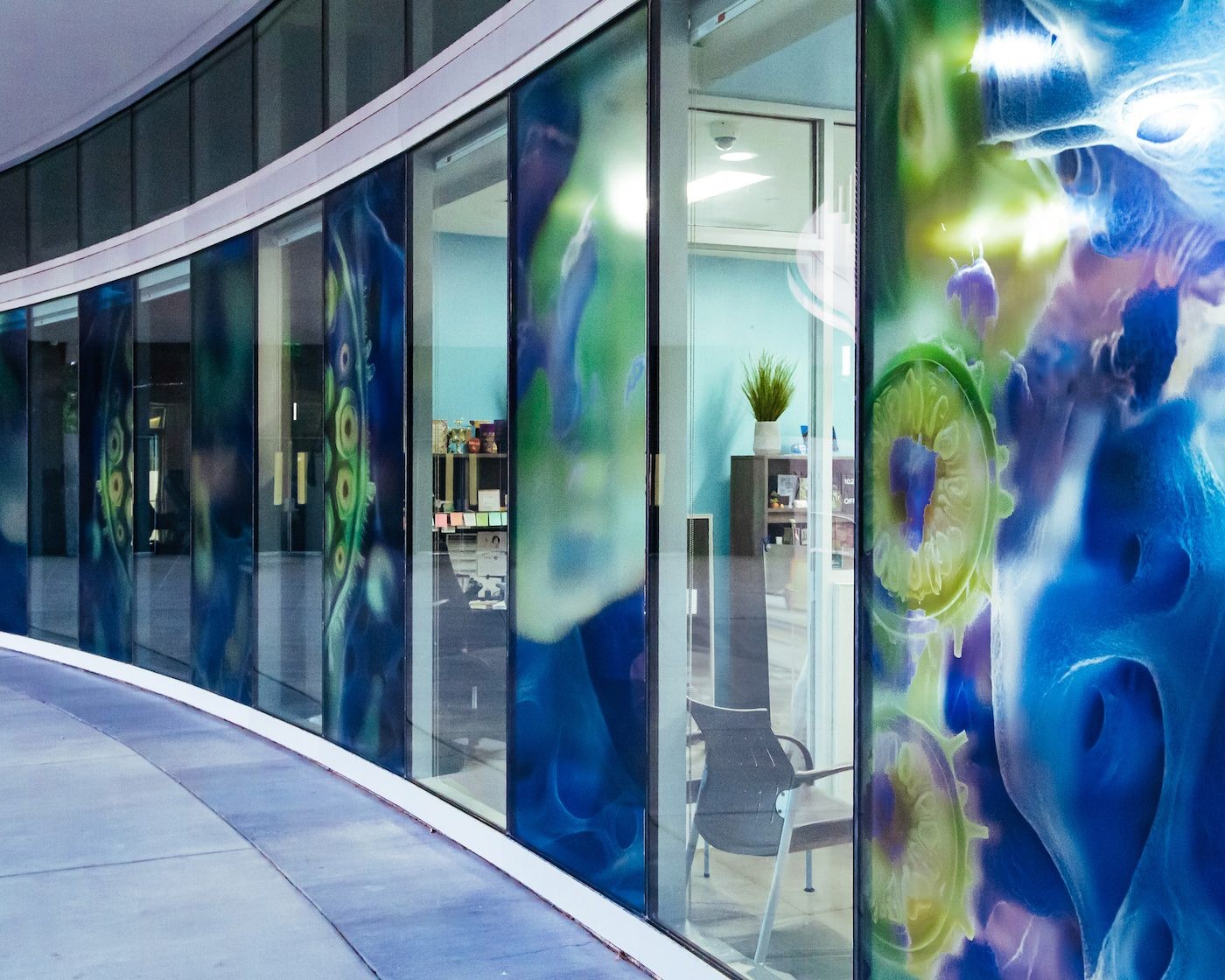
Jazsalyn’s A(spora): On the Gullah Geechee Corridor

Denis Maksaens: Glitch and Representation in the Caribbean
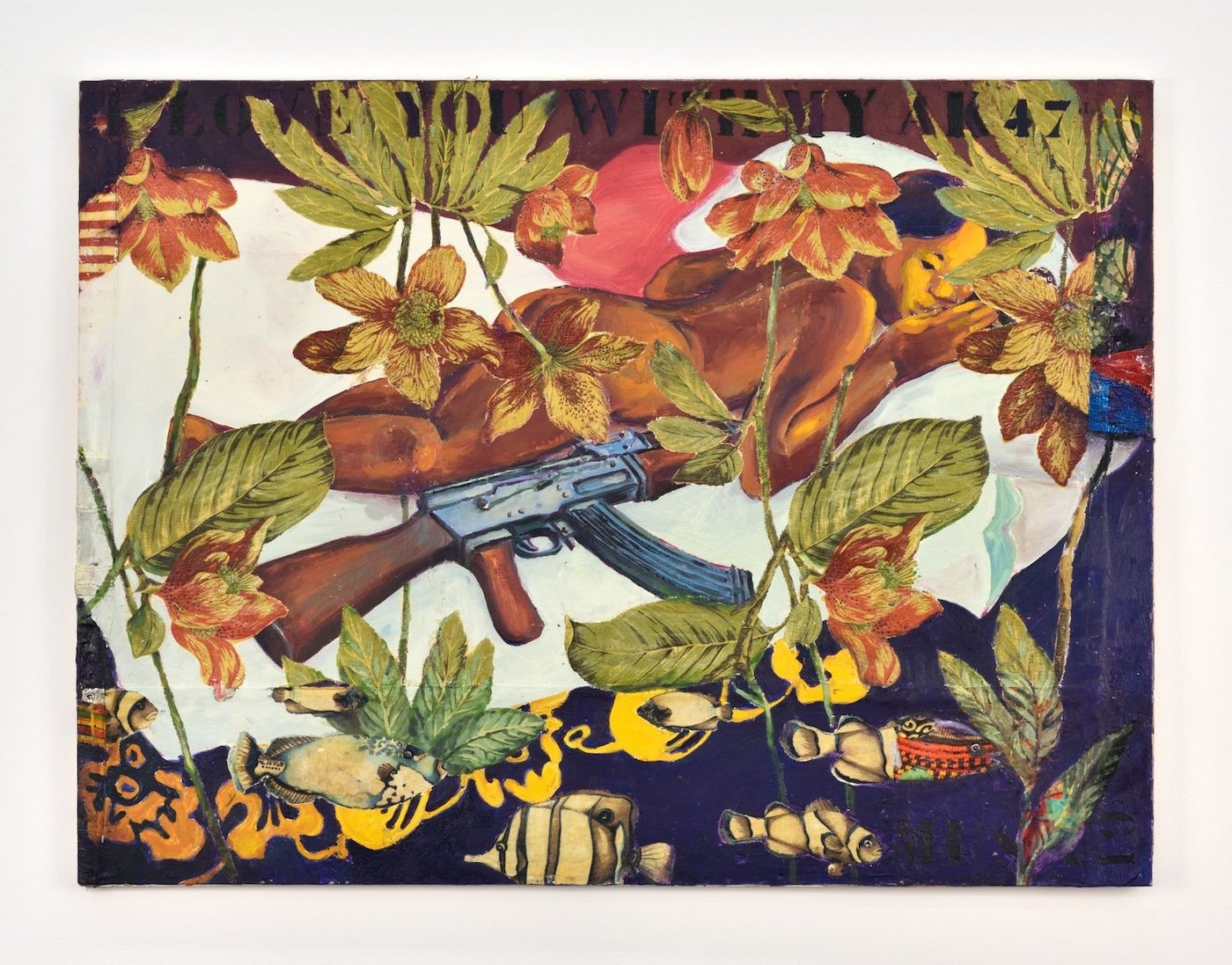
Sudan Art Archive Aims to Reclaim a Canon from Afar
Read more from
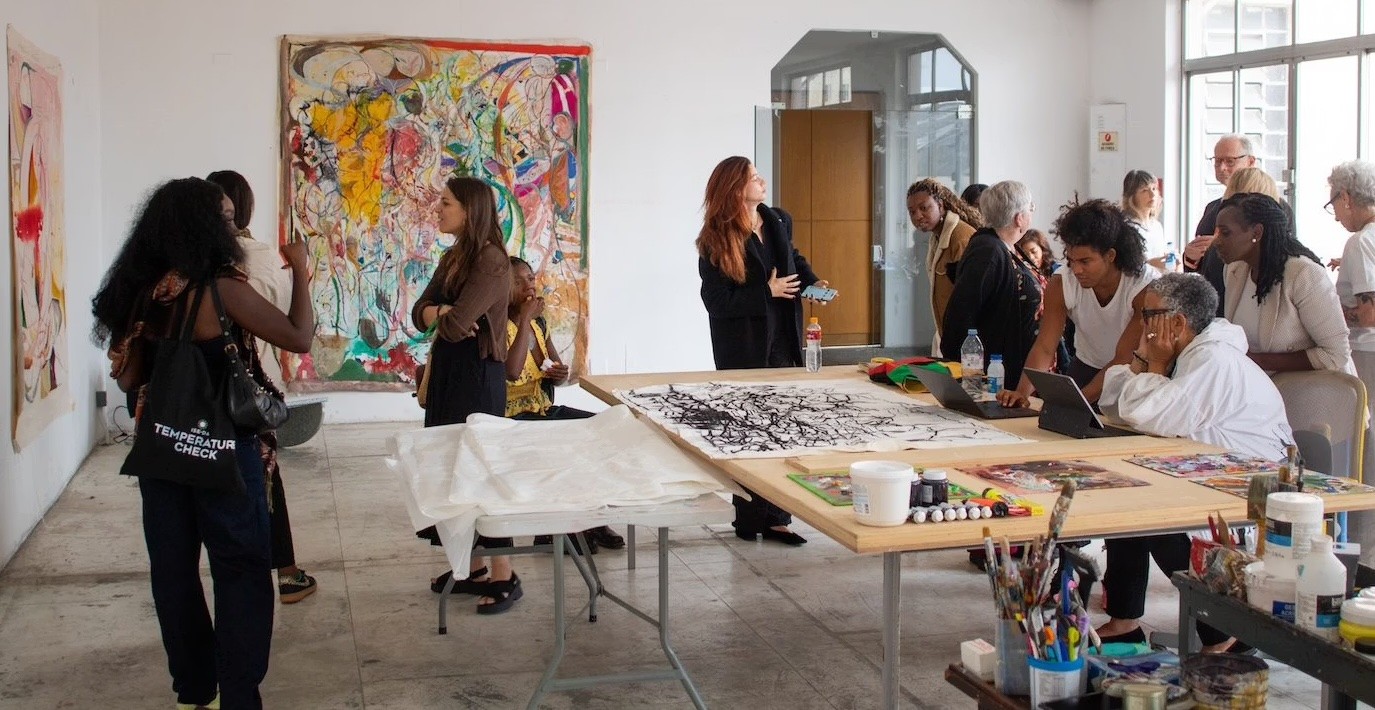
A Collector’s Guide to São Paulo
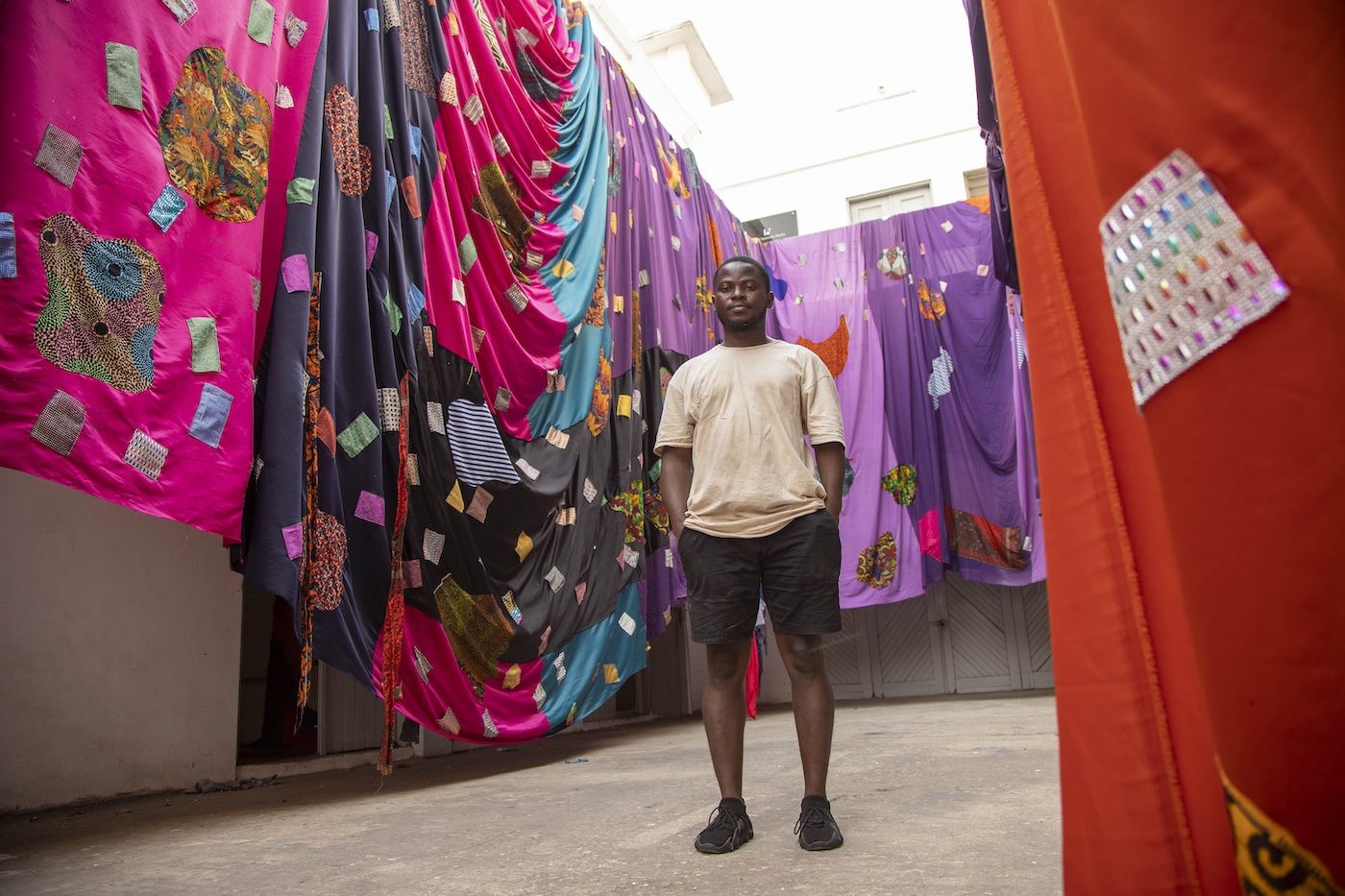
Emmanuel Aggrey Tieku Wins 2025 Ellipse Prize Focused on Ghana’s Emerging Art Scene
